Singapore International Sound and Sight Exhibition 2016
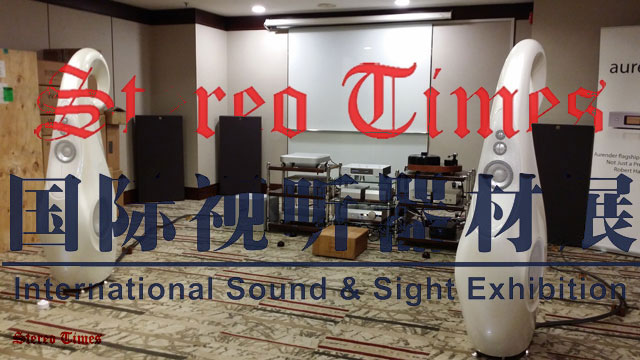
Fifteen years ago, when our esteemed publisher Clement Perry was still a young man, eager to spread his wings and see the world, he visited Singapore and wrote an article in 2 parts covering the International Sound and Sight Exhibition of 2001 (which you can read about here). Revisiting the article, written during those heady days of unbridled hifi consumerism, it is easy to see why everyone had big smiles on their faces and great hopes for the future.
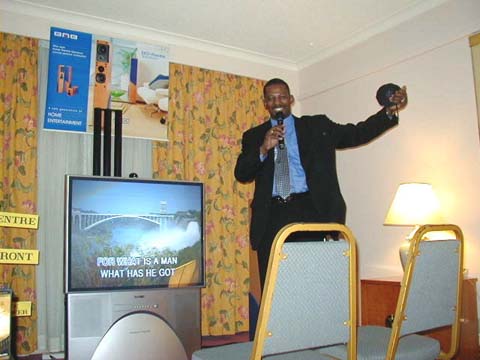
 It is now 2016, exactly 15 years later. Clement Perry is still a young man from all accounts, and still belting out a mean “My Way” from the karaoke machine, but everyone else has definitely aged. As we speak, Singapore is suffering from a slowdown in the local economy that looks like it has pervaded even the seemingly impervious hifi industry. Reflecting the bearish mood, this year’s International Sound and Sight Exhibition proved to be a small but intimate affair. Conducted in the Parkroyal Hotel right in the midst of Singapore’s Little India, the exhibitors were spread out over 2 floors, the 2nd and the 7th. There was still a decent amount to be seen and listened to, and rewards were still there for the patient and the insightful. Having just returned literally the day before from attending the massive Guangzhou 2016 AV Fair, however, my brain was still reeling from negotiating a never-ending sea of bodies and a constant bombardment of audio stimulation, and frankly I was feeling far from patient and/or insightful. The Singapore show felt muted in comparison, but in the end proved to be much more relaxed and informal. Of course, to be fair, the Chinese hifi market is many times bigger than the Singapore one, and this is also reflected in the size and the turn-out of this Show.
It is now 2016, exactly 15 years later. Clement Perry is still a young man from all accounts, and still belting out a mean “My Way” from the karaoke machine, but everyone else has definitely aged. As we speak, Singapore is suffering from a slowdown in the local economy that looks like it has pervaded even the seemingly impervious hifi industry. Reflecting the bearish mood, this year’s International Sound and Sight Exhibition proved to be a small but intimate affair. Conducted in the Parkroyal Hotel right in the midst of Singapore’s Little India, the exhibitors were spread out over 2 floors, the 2nd and the 7th. There was still a decent amount to be seen and listened to, and rewards were still there for the patient and the insightful. Having just returned literally the day before from attending the massive Guangzhou 2016 AV Fair, however, my brain was still reeling from negotiating a never-ending sea of bodies and a constant bombardment of audio stimulation, and frankly I was feeling far from patient and/or insightful. The Singapore show felt muted in comparison, but in the end proved to be much more relaxed and informal. Of course, to be fair, the Chinese hifi market is many times bigger than the Singapore one, and this is also reflected in the size and the turn-out of this Show.
At any rate, nobody wins any prizes for guessing that the big names in the audio world would make a grand appearance here, and do so they did. Here’s a quick round-up of some of the more memorable ones:
WILSON AUDIO, EMM LABS
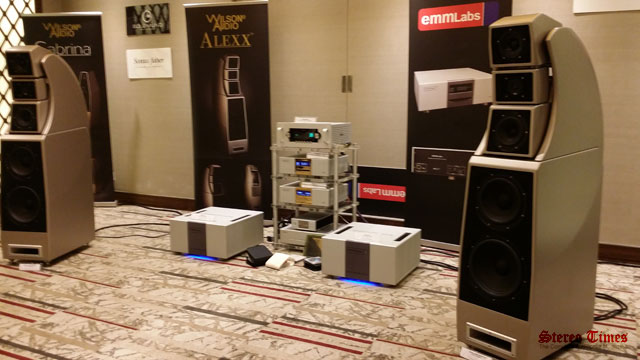
Wilson’s mighty ALEXX loudspeakers (priced at SGD$120,000 a pair) took pride of place in one of the bigger rooms in the Show. The ALEXX mid-range is spread over 2 drivers, one 7” (first introduced in the Alexandria XLF) plus the 5.25” (first used in the Sabrina). The ALEXX also uses the same XLF (Cross Load Flow) technology used in the eponymous Alexandria XLF enabling the lucky owner to configure the speaker port to face the front or the back, thus making it very user friendly for many more different listening rooms. Driven by EMM Labs MTRX 2 monoblocks, the system did what it promised, in terms of its authority, solidity and scale. For those with the requisite moolah, the Show would have begun and ended with this room. The rest of us get to enjoy more fun in the rest of ISSE.
VON SCHWEIKERT, ACCUPHASE, TANNOY
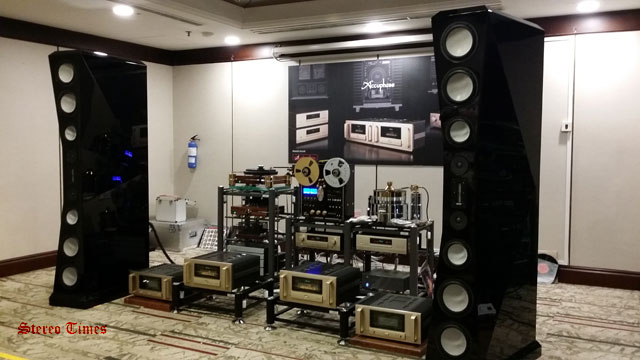
Echoing the recent trend spotted in the Guangzhou AV Fair, the Von Schweikert/Accuphase room used reel-to-reel tape as one of their sources to demonstrate their imposing Ultra 11 flagship loudspeaker. The room was certainly large enough to do justice to these behemoths. Up close, they can be rather fearsome. With a stated frequency response of 10Hz to 100kHz (sic), as well as sensitivity of 94dB/W/m, every Ultra 11 loudspeaker boasts 2 concealed subwoofers powered each by its own 1000W amplifier, two 5” ribbon tweeters (one of which is backward firing in the manner of the old Infinity IRS Betas), four 9” ceramic mid-bass drivers, two 7” ceramic mid-range drivers, and two more beryllium tweeters for good measure, just so that you can hit that 100kHz high end when you most need it. Driven by Accuphase electronics, I half-expected to see fruit bats echo-locating their way into the room, drawn in by highest frequencies which obviously were not audible to me, nor (I suspect) to any other human being that day. Or before. Or since.
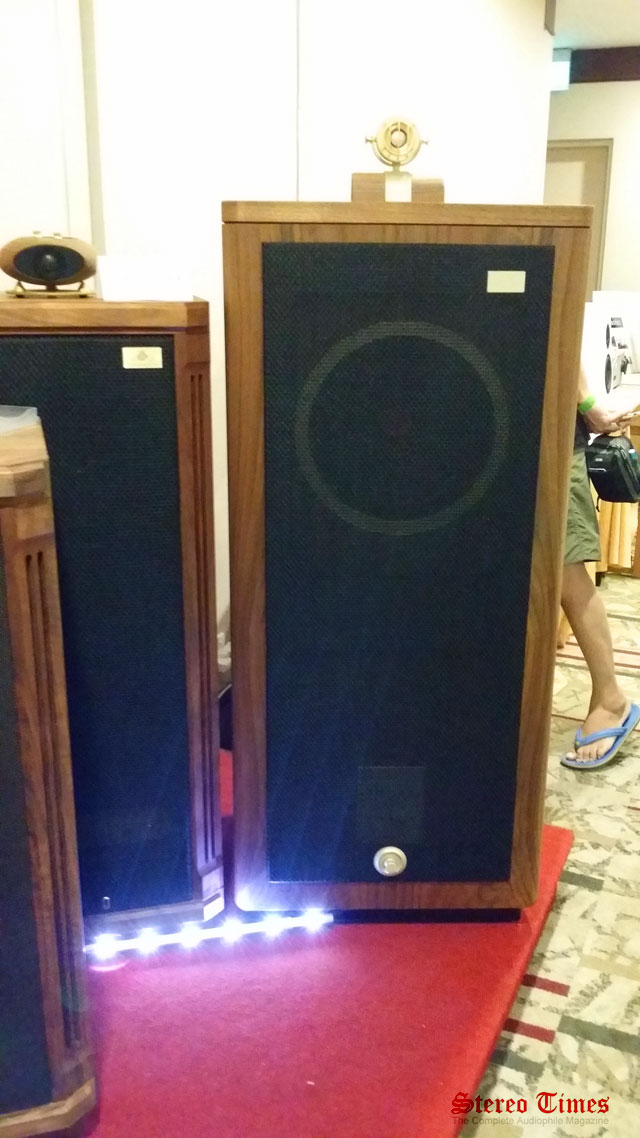
This room also showcased the now-legendary Tannoy GRF-90, which I was actually so much keener to listen to. Unfortunately, it was only on static display, sitting rather forlornly next to its smaller, slightly less distinguished brethren. In more modest digs, I have no doubt that the humbler looking Tannoy GRF-90 (humbler in comparison to the Ultra 11s, that is) would have no problems filling the room with similar SPLs as the big Von Schweikerts. In case you are not au fait with hifi across the pond, the GRF-90 was Tannoy’s 90th birthday gift to itself, and depending on your proclivities, the GR in the name could either stand for Gold Reference, or Guy Rupert, after the Scotsman who founded the company. Housed in an enclosure of bespoke birch ply, the GRF-90 also sports complex bracing and twin rear-firing ports to reduce internal turbulence generated by the back of the 12” Alnico Dual Concentric Drivers. Limited to just 90 pairs worldwide, I count myself lucky to even have laid eyes on them. Price on application.
VIVID AUDIO, PHASEMATION, ACCUSTIC ARTS
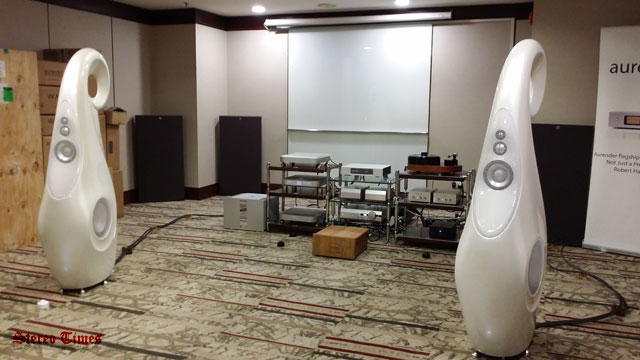
I have always been impressed by Vivid Audio’s Giya loudspeakers, and this year at the ISSE, it was no exception. The range topping Giya G1 loudspeakers (price SGD$90,000/pair), dressed in a foudroyant pearl white livery, made effortless music while being driven by a combination of Phasemation and Accustic Arts electronics. Needless to say, the G1 with its glass reinforced balsa cored composite cabinet and its 4-way 5-driver system, was highly revealing of the quality of its foregoing amplification equipment, showing off to good effect the Phasemation CA-1000 preamplifier (SGD$35,000), and the Accustic Arts Mono III power amplifier (SGD$35,000 a pair).
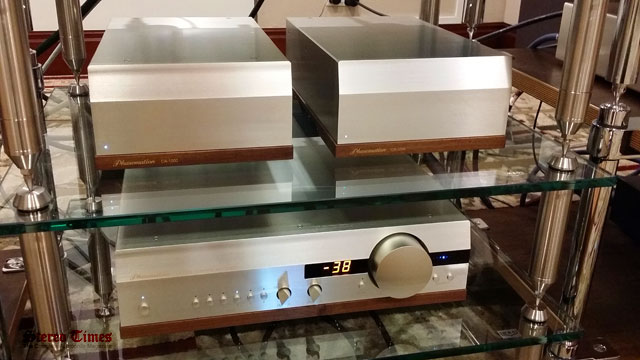
The Phasemation CA-1000 Control Amplifier, as it is called by the manufacturer, has won a number of Japanese awards since 2014 when it was first released, due in no small part to the mono-block layout of the preamplifier and the heroic efforts put into isolating power supply noise from the signal chain.

The Accustic Arts Mono III is newly launched this year, and contains no less than 24 Mosfets fed by 2 huge toroidal transformers. Together, these produce 1,100W into 4 ohms of Class A/B power, heavily biased into Class A. Source was Aurender’s flagship N10 (priced at SGD$10,000) while Phasemation’s EA-1000 two-box phono stage (SGD$15,000) performed RIAA conversion duties whenever vinyl was being spun.
The EA-1000 is one of the more extreme implementations of monoblock theory, especially when applied to phono stages. My own 47 Labs Phono Cube is built along similar lines, with two mono channels (albeit housed in the same block) powered by a two separate battery supplies. The EA-1000 is the same idea taken to a further level, with separate, elaborate housings per channel, just as in a monoblock power amplifier. Both are connected to one outboard power supply, and you have a choice of four RIAA correction circuits, namely two different Mono curves, Stereo, and 78. Since its introduction in 2012, it has won awards in the Japanese audio press for 3 years in a row.
For a system that costs close to SGD200,000, not including the vinyl source, cables or other accessories, you would have every right to expect really good sound. Let’s just say that, based on what I heard that day in that room, you will not be disappointed.
YAMAHA NS-5000
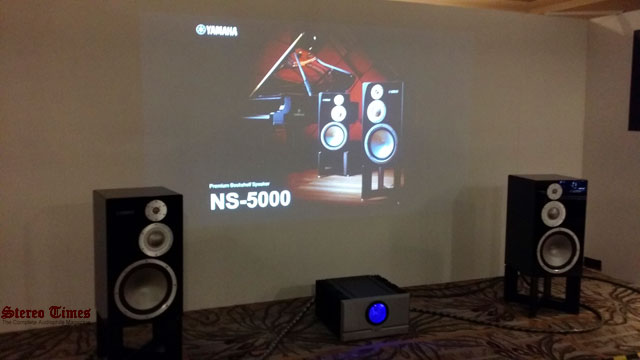
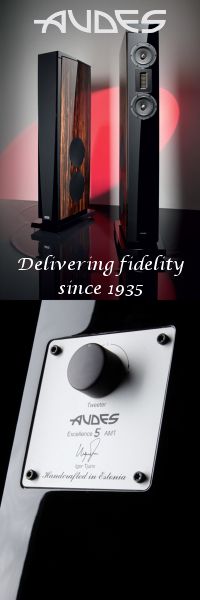 One of the highlights of the Singapore show this year was the eagerly-awaited introduction of the Yamaha NS-5000. Yamaha chose Singapore as the Asian debut for this loudspeaker, the spiritual successor to the wildly successful NS-1000, and not even Hong Kong had seen or clapped ears on this baby. Needless to say, it is jam-packed with innovative ideas and exotic materials befitting one of the great speaker lines in audio history. Chief Engineer Okazaki Koji of Yamaha claims that the NS-5000 was designed to be “more of a musical instrument than it is a speaker.” What really made this dream possible was the introduction of a synthetic material called Zylon, which has the all desirable acoustic properties of beryllium but not the latter’s metallic flavour, which as we all know was one of the bugbears of the original NS-1000 with its beryllium tweeters. It took Yamaha 8 years of painstaking research and development to come up with the drivers now used in the NS-5000, in particular the JA-05K6 3cm soft dome tweeter. Yamaha did not stop at using Zylon in the tweeters, however: they even developed mid-range drivers and cone woofers made of 100% Zylon. These three cutting-edge drivers can now be yours in a laminated Japanese white birch plywood housing from the northern island of Hokkaido for the mere sum of SGD$19,600 a pair.
One of the highlights of the Singapore show this year was the eagerly-awaited introduction of the Yamaha NS-5000. Yamaha chose Singapore as the Asian debut for this loudspeaker, the spiritual successor to the wildly successful NS-1000, and not even Hong Kong had seen or clapped ears on this baby. Needless to say, it is jam-packed with innovative ideas and exotic materials befitting one of the great speaker lines in audio history. Chief Engineer Okazaki Koji of Yamaha claims that the NS-5000 was designed to be “more of a musical instrument than it is a speaker.” What really made this dream possible was the introduction of a synthetic material called Zylon, which has the all desirable acoustic properties of beryllium but not the latter’s metallic flavour, which as we all know was one of the bugbears of the original NS-1000 with its beryllium tweeters. It took Yamaha 8 years of painstaking research and development to come up with the drivers now used in the NS-5000, in particular the JA-05K6 3cm soft dome tweeter. Yamaha did not stop at using Zylon in the tweeters, however: they even developed mid-range drivers and cone woofers made of 100% Zylon. These three cutting-edge drivers can now be yours in a laminated Japanese white birch plywood housing from the northern island of Hokkaido for the mere sum of SGD$19,600 a pair.
Driven by Pass Labs electronics, the NS-5000 was playing Queen’s “Radio Gaga” when I visited. Unable to sit in the sweet spot with the tweeters at correct ear height, I nevertheless still heard good image depth, a wide soundstage and impressive bass slam from the pair of 12” woofers. Is it better than the NS-1000? Well, that’s the million dollar question that will only be answered when I have a pair for more detailed review. I would say, though, that I believe Yamaha’s efforts over the last 8 years have paid off and this is will prove to be an amazing pair of loudspeakers.
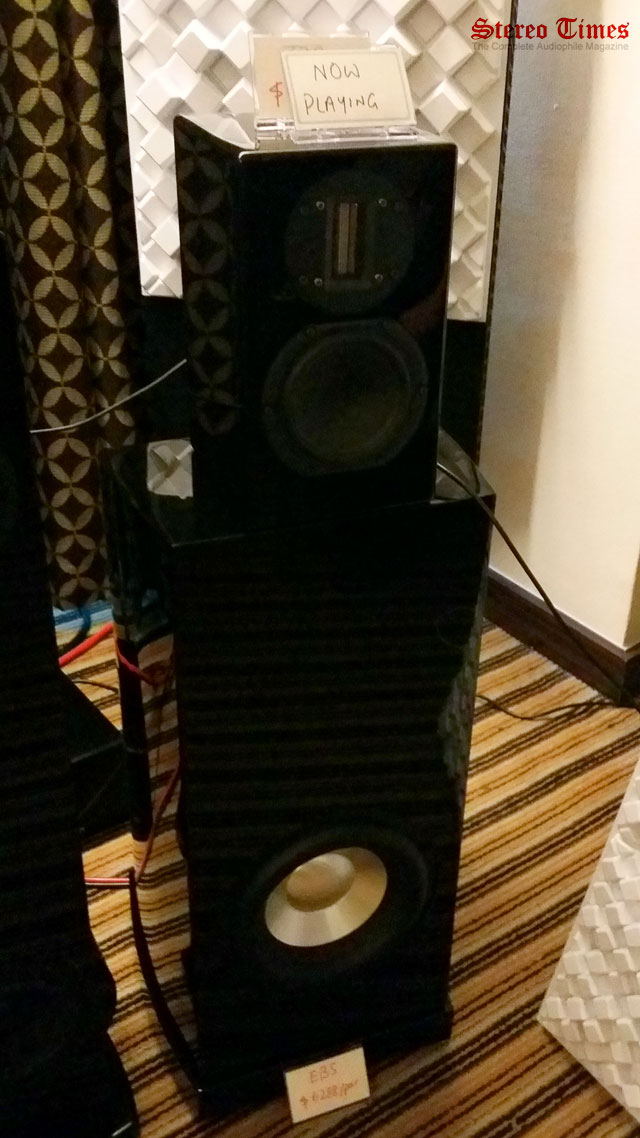
Two interesting brands I came across in ISSE deserve specific mention here. The first is an Australian brand called Axis Loudspeakers. For those who have been around Asian hifi during the 1990s, this brand might not be unfamiliar. Started by a gentleman by the name of John Reilly, Axis launched a special 2-way monitor speaker called the Voicebox S, which is designed in Australia by John but manufactured in China under their strict quality control. However, during the Asian economic crisis of the late 1990s, production was halted until recently when John decided to re-start manufacturing the Voicebox S.
What this pair of small bookshelf speakers can do is to sound so much bigger than their small size, in the manner of the Rogers LS3/5A. Shown here with its optional EBS woofer box, John played a drum solo track through the Voicebox S alone (without engaging the woofer) and the scale, realism and extension of the drum set was startling. Using a Chinese Fountek brand ribbon tweeter and a 5.25” Peerless woofer, I must say that the Voicebox S (83dB sensitivity) does not look or sound exotic, but the sounds it made in that hotel room really convinced me that I will need to have a closer listen to this brand of speakers in 2017.
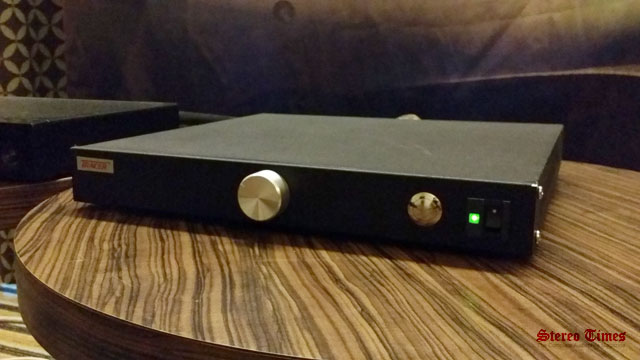
Another brand which I must admit I have never heard before, but which hails from Taiwan, is Tracer Electronics. I could not find out much about this manufacturer on the spot, there is virtually no information on the internet and their room was almost bare save for a third-party CD player, a bare bones integrated amplifier bearing nothing but a volume pot, an on-off switch and the brand name. Not forgetting a pair of speakers that have obviously made the rounds to various shows and demo sessions, before ending up here in Singapore looking rather the worse for wear.
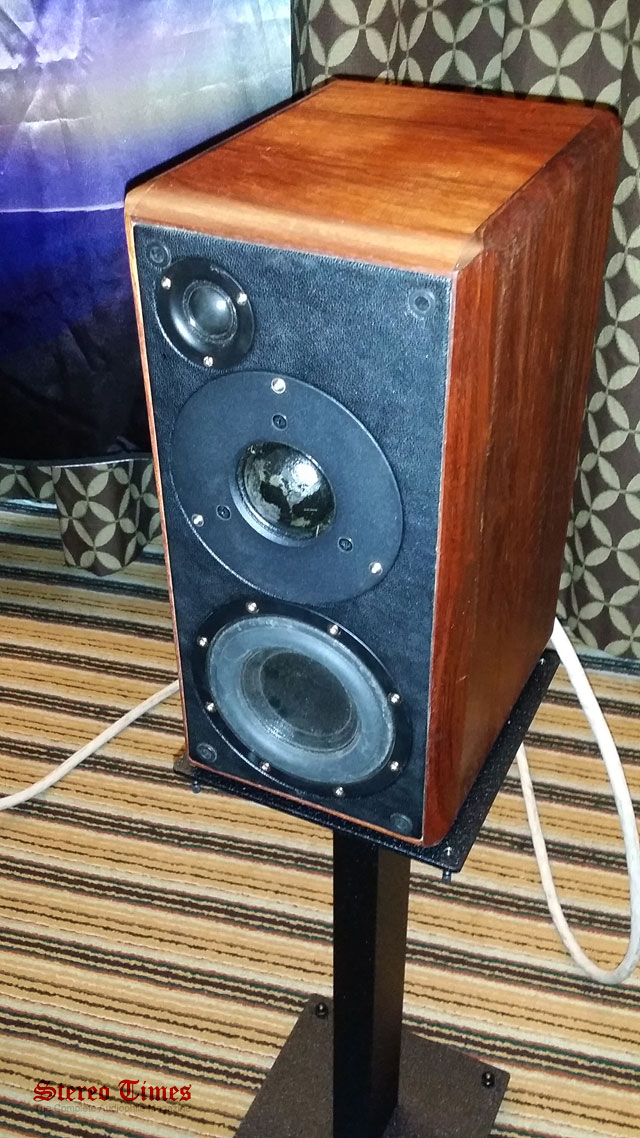
However, despite the hair-shirt décor and lack of eye candy in this room, I found myself quite taken by the sound made by this mysterious system, in particular the speakers which I am told sports a sensitivity of 90dB/W/m and sells for a not inexpensive USD$4000. I will try to find out more about this company and see if I can wrangle a pair of their very interesting speakers for review.
TAIWANESE TUBES AND SPEAKERS
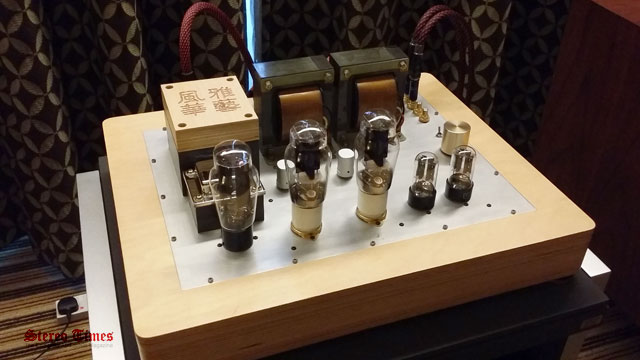
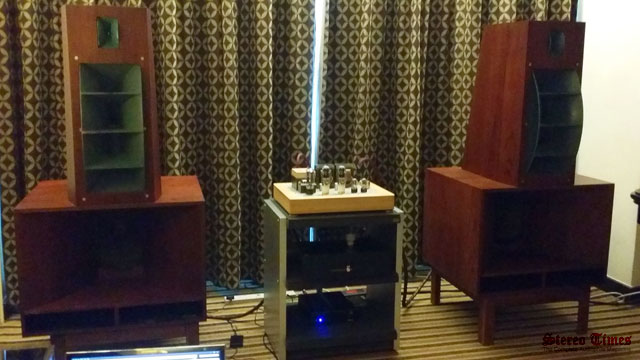
Not only is vacuum state audio showing no signs of abating in 2016, it is proving its resilience in its many guises (single-ended, push pull, OTL, you name it) and were being paired in the Singapore show with many exotic speakers of high sensitivity and also utilise non-mainstream technologies. Manufacturers and audiophiles from Taiwan have always been at the forefront in Asia when it comes to unearthing and refining old technologies, and it was fortunate that a few of such manufacturers decided to grace the Singapore show this year.
An example of just such a manufacturer is Arte Forma Audio. This Taiwanese company is not unknown in the west, having launched products in RMAF since 2013 and received some measure of critical acclaim. Here, they showed off their new integrated amplifier (price SGD$2600) which makes use of a pair of 2A3 output tubes and power supply chokes for enhanced sound quality. Arte Forma claims that their output transformers are specially wound for them by the same company that winds huge power transformers for public utility plants in Taiwan, so users need not second-guess the quality of their iron. They also specially brought along with them their funky loudspeakers that incorporate vintage Altec Lansing horns and drivers in custom-made wooden enclosures (priced at SGD$8600 per pair). As expected, the sound from such a system was never going to hit all the audiophile buttons, but connoisseurs of tone and real-life scale and dynamics would have been over the moon.

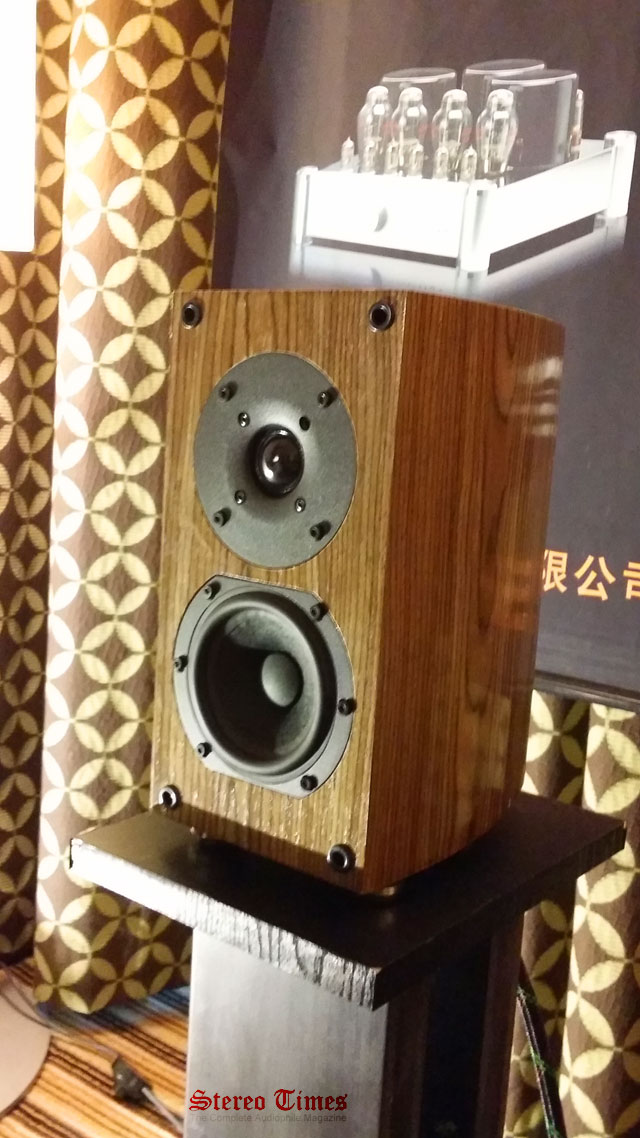
Another Taiwanese company that had been around for some time now is L A Audio. I knew of them but had always dismissed them as a run-of-the-mill producer of average tube amps. Their demo system, however, took me by surprise. Their M-5 integrated amplifier is designed with four 6AS7G tubes to output a grand total of 25W per channel, and powering a two-way mini-monitor which they call the MK-2. I had to re-check my notes as I could not find this particular speaker in their online catalog! Convinced that my notes are accurate, and with a photograph to prove that they really do exist, I can report that the two components together made such wonderful music that I would really not have believed them capable of, had I not been there personally and heard them myself. No voodoo or hidden magic here, just years of good, sound engineering and design coupled with mature production know-how from years of making solid hifi. Kudos to L A Audio and hoping to hear more of their range very soon!
LIFESTYLE AND PORTABLE PRODUCTS
This show report would not be complete without writing about the other side of the audiophile coin, the people who use headphones, portable amps, AV equipment etc.
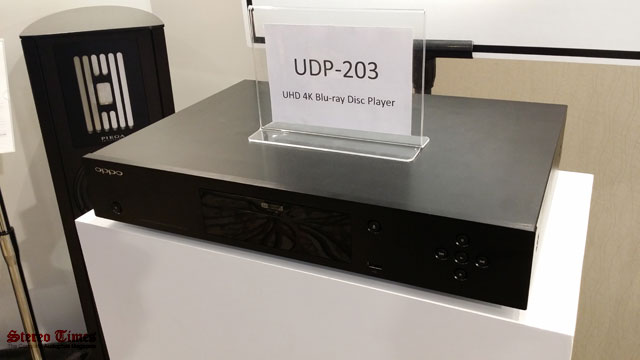
One of the most interesting developments on the home theatre front is the introduction of Oppo’s newest universal player, the UDP-203 4K Blu-ray universal player (SGD$899), which was on pre-order during the show. This player is poised to take over where the very successful BDP-105 player leaves off, and promises not only enhanced 4K video playback but also supports all legacy as well as future forms of digital audio reproduction (using the AK4490 chipset), making it the new must-have Swiss army knife of the AV world. Apparently, there is another even more advanced player in the making – the UDP-205 AU (audiophile approved version). Those who are serious 2-channel aficionados may want to wait for this one instead…
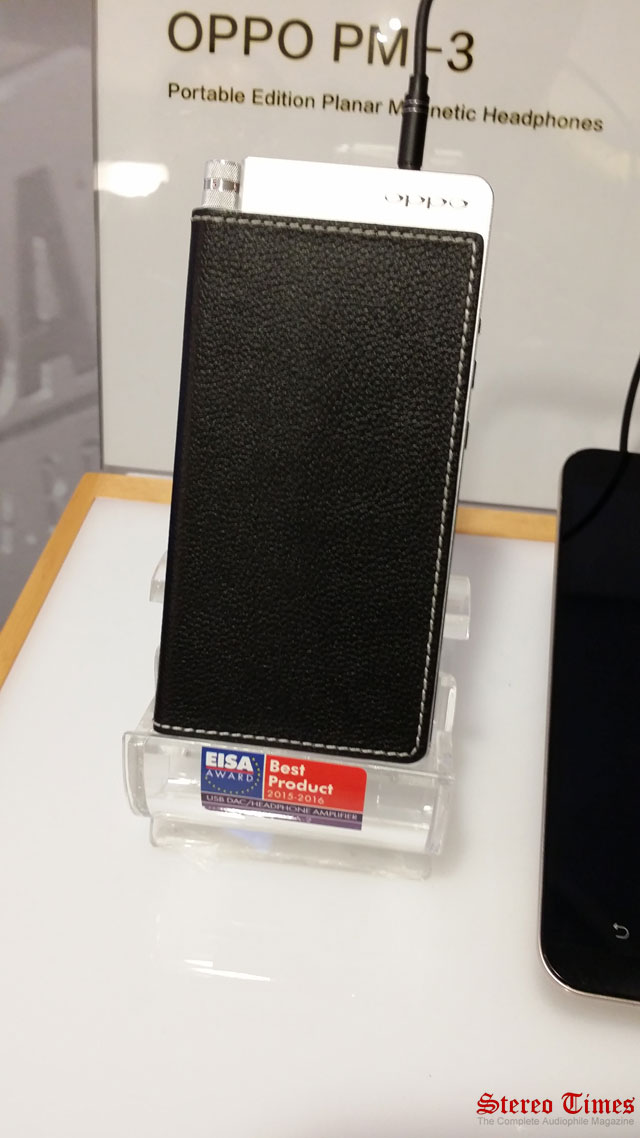
Oppo also released their new personal headphone amplifier, the HA-2SE (SGD$479). The original version of this product, the HA-2, won Stereo Times’ Most Wanted Component last year (read all about it here). This SE version sports an improved internal ESS Sabre Reference ES9028-Q2M DAC chip, and supports up to DSD256 (native mode only) playback from your mobile phone or other digital player. Handily, it also doubles as a power bank if your phone is critically low on juice. In my opinion, Oppo has gilded the lily on this one. Not wanting to jump the gun or anything, but based on what I was hearing through the Oppo planar headphones, the HA-2SE is most likely poised to win another Most Wanted Component from us. I would love to have a hands-on session with this product and see if it does actually deserve another award.
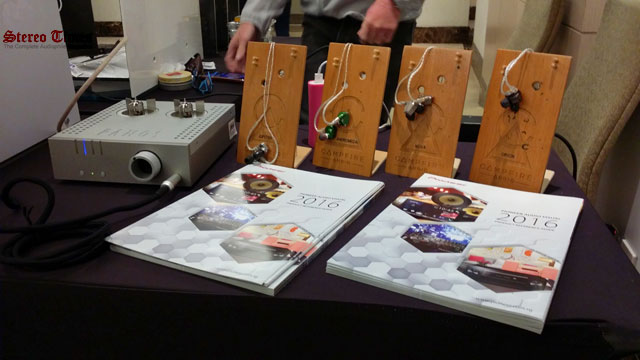
Campfire Audio, a New Zealand company, was on hand to show their range of hand-built, high quality earphones. Showgoers had a choice of trying on the Jupiter, Andromeda, Nova or Orion. The Nova and Andromeda were only released this year at the Axpona show in Chicago in April, and the Andromeda (price USD1099) is Campfire’s flagship product, featuring five armature drivers and a special Tuned Acoustic Expansion Chamber. If I were an earphone fanatic, and had that kind of money to spare, I know which earphone I will be getting for myself.
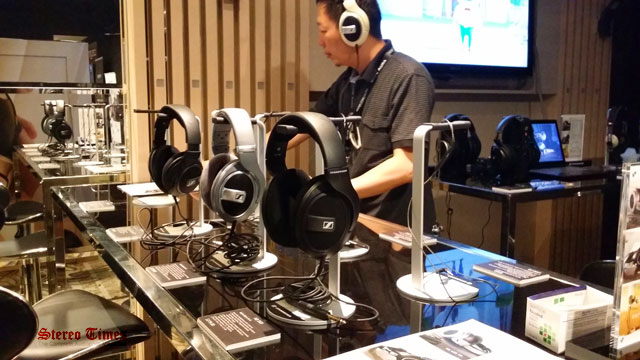
Needless to say, no AV show is complete without the doyen of high end headphones, Sennheiser. This time around, almost all their best selling models are available for trial, and judging from the average age of the enthusiasts in this room, I would say that Sennheiser has captured quite a good chunk of the 20-30 year-old age group, with quite a sizeable representation from the fairer sex, to boot. I would like to think that these young people represent the next generation of audiophiles who will keep our hobby going strong for many more years to come.
CONCLUSION
The products mentioned in this report is only a small portion of the gems that even a small show like Singapore’s ISSE contained. To say that there is something for everyone here is to understate the point. I was heartened to see a much younger demographic thronging the rooms, soaking up the atmosphere and listening to older audiophiles hold court on the pros and cons of using tubes vs solid state, and whether vinyl sounds better than open reel tape, and so on. It is my wish that, through shows like ISSE 2016, the industry here continues to plough on despite obvious difficulties, because there is a nascent market hungry for high end products, and because ultimately audio is a passion for all of us. Yes, we all need to ensure that the business remains viable, but we only need to see how this younger generation is embracing high end sound to know that the future remains bright and exciting. There is, at the end of the tunnel, a light that we can all look forward to.
On that hopeful note, I would like to wish all Stereo Times readers a wonderful Christmas and a very happy 2017.

Stephen Yan
Stereo Times Masthead
Publisher/Founder
Clement Perry
Editor
Dave Thomas
Senior Editors
Frank Alles, Mike Girardi, Russell Lichter, Terry London, Moreno Mitchell, Paul Szabady, Bill Wells, Mike Wright, and Stephen Yan,
Current Contributors
David Abramson, Tim Barrall, Dave Allison, Ron Cook, Lewis Dardick, John Hoffman, Dan Secula, Don Shaulis, Greg Simmons, Eric Teh, Greg Voth, Richard Willie, Ed Van Winkle, Rob Dockery, Richard Doron, and Daveed Turek
Site Management Clement Perry
Ad Designer: Martin Perry





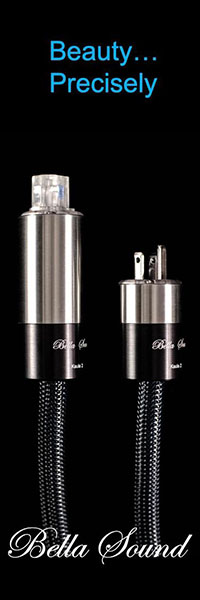
Be the first to comment on: Singapore International Sound and Sight Exhibition 2016